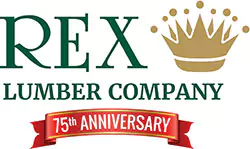Welcome to our interactive wholesale lumber catalog. We stock both hardwoods and softwoods, imported and domestic. You can search our wholesale lumber products using the filters on the left or by typing the name into the search box. Click on any item to view product details, including description, properties, and applications, as well as our Quick Quote form. You can also compare products by selecting the green “Compare” tab on up to four items and then clicking the “Compare” button.
If you cannot find the lumber product you are looking for, please contact us and we will source the material you need for you.
Domestic Hardwood Elm, Red
Latin Name: Ulmus rubra
Family: Ulmaceae - the Elm family
Other Common Name(s): Moose Elm, Red Elm, Slippery Elm, Soft Elm
Domestic Hardwood
Suitable for Exterior/Interior Use
Interior Use Only
Uses
Food Containers, Interior Trim, Millwork, Mouldings, Toys
Distribution
Red Elm grows in similar setting to Grey Elm, which include the eastern parts of Canada and the United states, as far south as Texas and Canada. Like Grey Elm, Red Elm is hard hit by Dutch Elm disease.
General Description: The sapwood in grayish white to brown in color, and the heartwood which is typically darker then the sapwood usually has a reddish tint. As a whole the wood usually has a darker brown appearance then Gray Elm, but both species are very similar in appearance. Red Elm often has a faint odor.
Price Range ($ least expensive, $$$$$ most expensive):
$$
Working Properties
Machining: Good
Nailing: Good
Glueing: Good
Screwing: Good
Finishing: Good
Physical Properties
Weight (lbs/BF): 3
Specific Gravity: 0.48
Modulus of Rupture (psi): 7,200-14,800
Modulus of Elasticity (1,000 psi): 1,100-1,540
Side Hardness (lbs): 620-1,320
Additional Information
Sharp tooling is a necessity to try and prevent wooly surfaces. Grey Elm has a tendency to dull tooling quicker then most hardwoods.
Item Availability
Not currently in stock, commercial quantities are limited. Please contact us to discuss alternate species.

